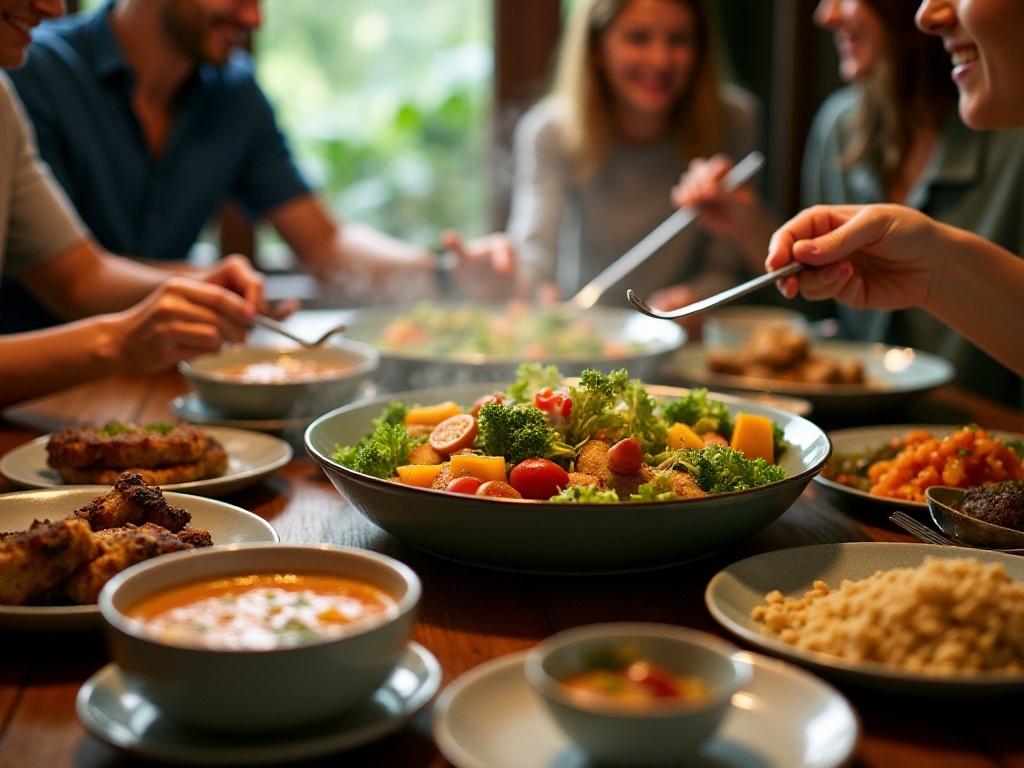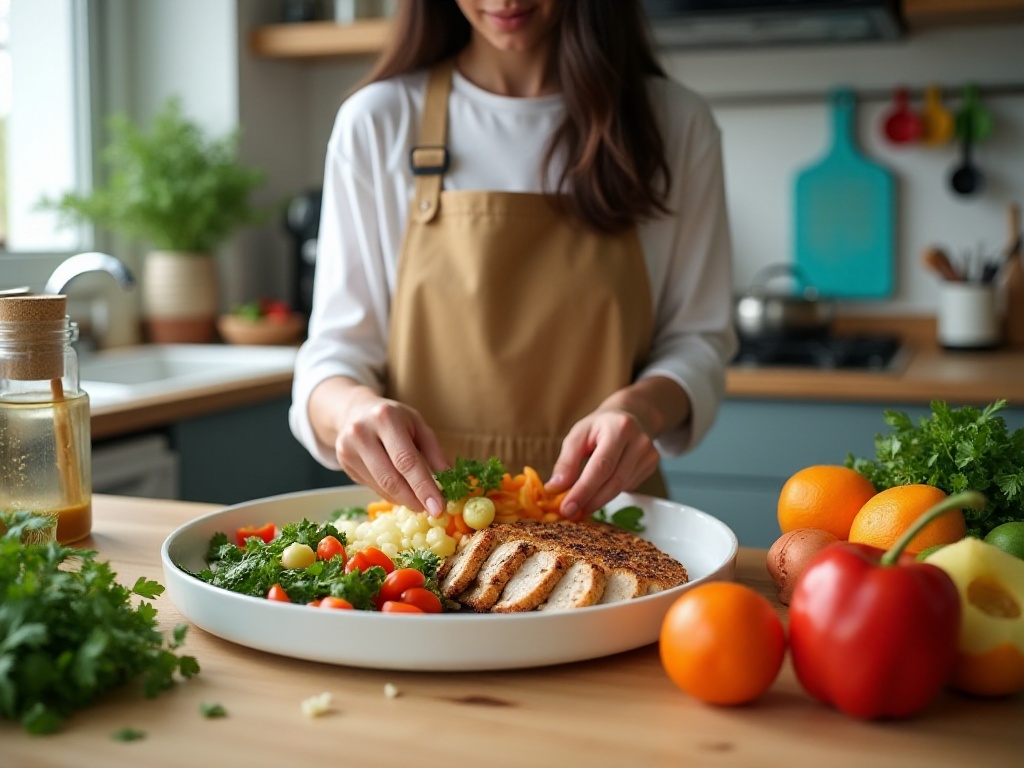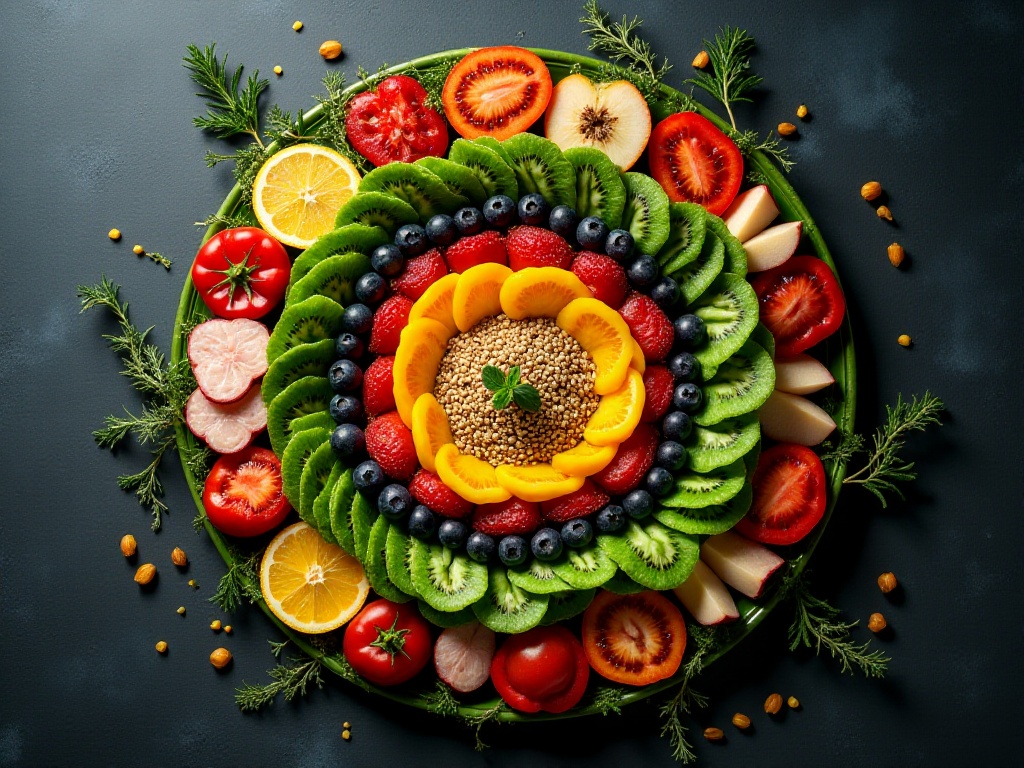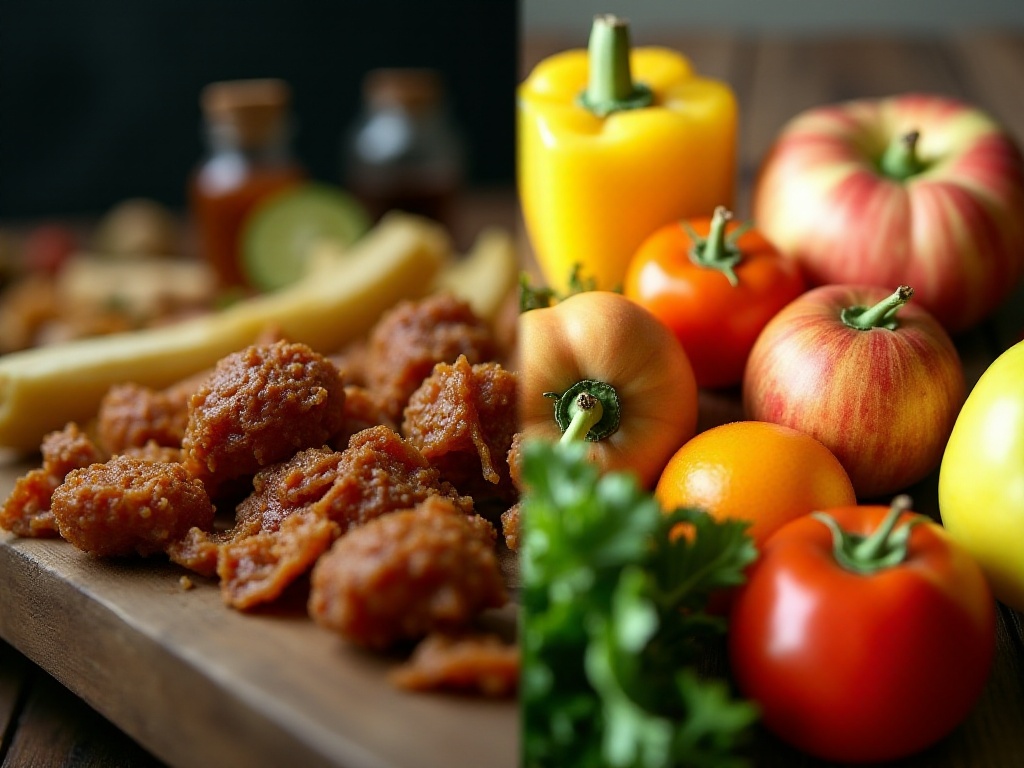Opening Chat
Hello everyone! Recently, I've been researching how to make healthy eating simple and fun. To be honest, I used to be a loyal supporter of takeout, thinking healthy eating meant just adding lettuce to lettuce - not only time-consuming but terribly tasteless. Whenever I saw friends posting their exquisite healthy meals on social media, I thought that was someone else's life, completely unrelated to me as a kitchen novice.
Until one day, I was hospitalized for stomach problems, and the doctor earnestly told me: "If you keep eating like this, you'll become a 'stomach care expert' at such a young age." This really scared me, so I started seriously studying healthy eating. After exploring and practicing for more than half a year, I discovered that healthy eating can actually be very easy and just as delicious as takeout once you master some tricks.
Young people today live at an incredibly fast pace, wanting to sleep in as much as possible in the morning, grabbing whatever's convenient for lunch due to busy work, and ordering takeout when hungry after working overtime. I'm very familiar with this lifestyle because that's how I used to live. However, when I really started focusing on healthy eating, I realized we have big misconceptions about the "no time" excuse. Today I'd like to share my personal experiences and insights, hoping to help you create a healthier diet.
Ingredient Selection
When it comes to healthy eating, ingredient selection is most important. I remember when I first started preparing healthy meals, my mind was full of lettuce, fruit, and scary all-vegetarian diets. Until I met a nutritionist who told me: "Healthy eating isn't about eating only vegetables, but achieving nutritional balance."
For staple foods, rather than buying regular white bread, it's better to choose whole wheat bread. My breakfast now typically consists of whole wheat toast with peanut butter, paired with a boiled egg and a glass of oat milk. To be honest, when I first started eating whole wheat products, I felt the texture was rough, like chewing grass. But after persisting for a while, I not only got used to the texture but also noticed my digestive system had clearly improved.
Besides bread, I also stock up on quinoa, oats, and brown rice. These whole grains are not only nutritious but can be varied according to mood, so it doesn't feel monotonous. For example, I particularly like making quinoa salads, topped with fried eggs, avocado, and cherry tomatoes - both beautiful and delicious.
Speaking of protein, here's a little-known fact: dark poultry meat has higher nutritional value than white meat. I used to think weight loss meant eating chicken breast, but now I know chicken thigh meat not only tastes better but is more nutritious. Plus, chicken thigh meat doesn't easily get tough, making it easy for beginners to master.
Besides chicken, fish is also a great source of protein. I love salmon and tuna, which are rich in omega-3 fatty acids and particularly good for health. Although they're a bit pricey, when you think about the money spent on takeout, buying good ingredients is completely worth the investment.
Soy products are also my favorites. Tofu, edamame, and soybeans are all sources of quality protein. I often substitute some meat with tofu, which is not only healthier but also saves money. Recently I've even learned to make my own soy milk - drinking a cup of warm soy milk in the morning makes me feel energized.
Vegetable and fruit selection also requires attention. I used to think vegetables were just lettuce and cabbage, but now I deliberately choose colorful vegetables like carrots, broccoli, spinach, and red peppers. Different colored vegetables contain different nutrients, and diversity ensures nutritional balance.
For fruits, my principle is to prioritize seasonal fruits. For example, eating more watermelon and peaches in summer, and choosing citrus and apples in winter. Seasonal fruits are not only affordable but also have higher nutritional value. Moreover, I've found seasonal fruits often better meet the body's needs - like watermelon being particularly refreshing in summer, and citrus fruits being rich in vitamin C to help boost immunity in winter.
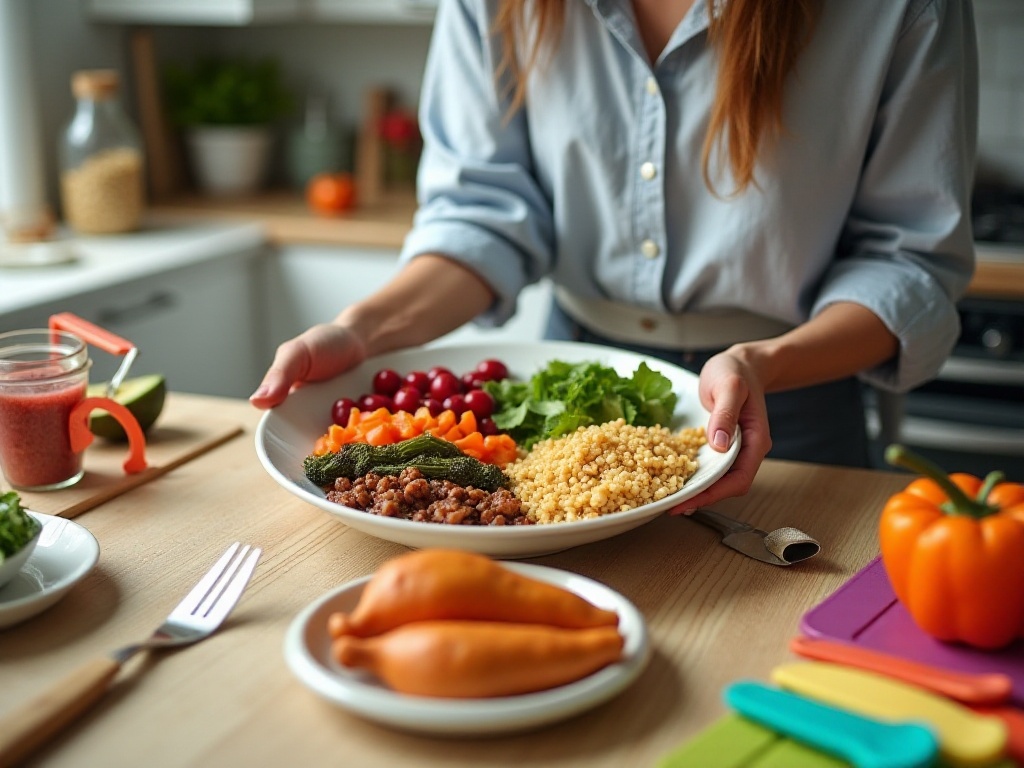
Cooking Techniques
When I first started cooking, I was always flustered, often spending over an hour on one meal. Later I discovered that advance planning is key to improving efficiency. Every Sunday evening, I spend half an hour planning next week's menu, which ensures nutritional balance and avoids repetition.
I write the menu in my phone's notes, along with a shopping list of needed ingredients. Shopping at the supermarket also has techniques - I arrange the use of ingredients according to their shelf life. Leafy vegetables and seafood should be used first, while ingredients like carrots and potatoes that store well can be used later.
Marinating is one of my favorite cooking techniques. I often marinate chicken and fish in advance on weekends, store them in containers, and cook them when needed. When marinating, I like to use lemon juice, minced garlic, shredded ginger, and rosemary for seasoning, which makes the meat more tender and adds flavor.
Speaking of seasoning, I rarely use ready-made seasonings now because many contain additives and preservatives. I make my own healthy seasonings, like lemon garlic sauce and mint green sauce. These all-natural seasonings are not only healthy but also make dishes taste richer.
The choice of cooking methods is also important. I now mainly steam, boil, stir-fry, and bake, trying to avoid deep-frying. If I need to stir-fry, I choose olive oil or sunflower oil, which have higher smoke points and are more suitable for stir-frying. Also, I use an oil sprayer to control oil usage, which ensures good taste without consuming too much oil.
Temperature control is key to improving dish taste. I used to always stir-fry on high heat, resulting in food being either too tough or too raw. Now I've learned to adjust heat according to different ingredients. For example, when pan-frying chicken breast, I first use medium heat to brown both sides, then switch to low heat to cook slowly, ensuring it's crispy outside and tender inside.
I also particularly like using the oven. The oven is really a blessing for lazy people - many dishes can be left unattended once put in, while maintaining the original flavor of ingredients. I often roast vegetables in the oven - just brush with olive oil, sprinkle some salt and black pepper, and you can roast delicious vegetables.
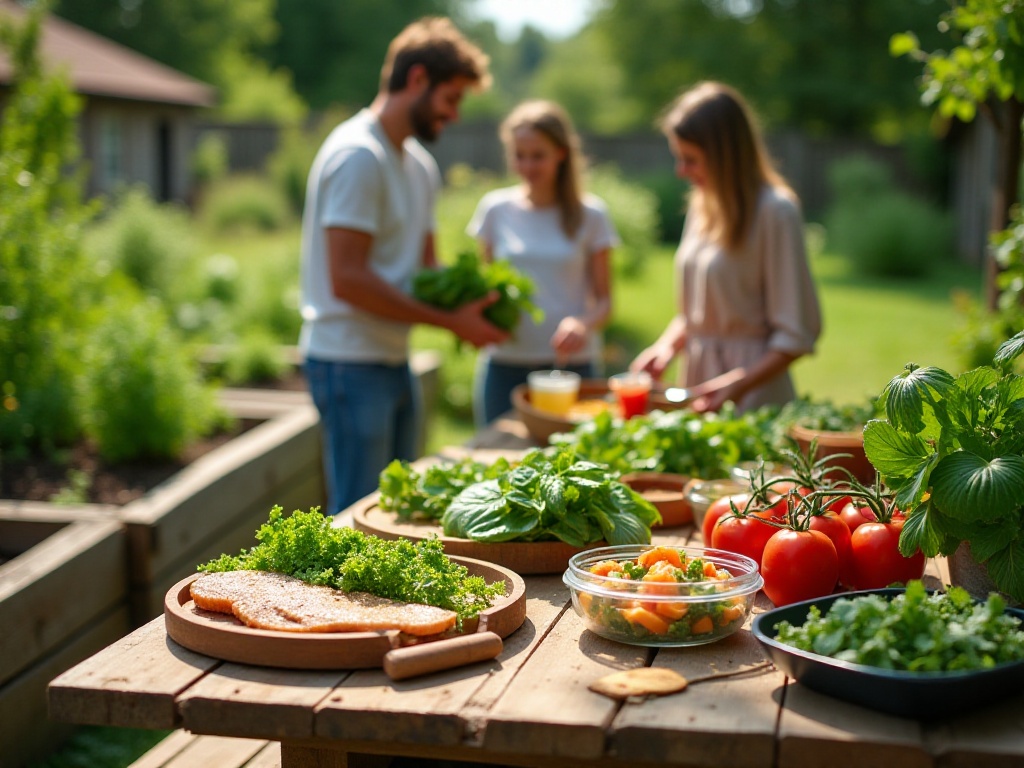
Eating Habits
Developing good eating habits is really important. I used to be a typical "wolf down food" type, wanting to finish a meal in three minutes. Later, after reading some science about the digestive system, I learned this is particularly bad for the body.
Now when I eat, I remind myself: put down utensils, chew well, and taste the food. It felt very unnatural at first, like wasting time. But after persisting for a while, I found that chewing slowly not only lets me better appreciate the food's taste but also helps me recognize fullness in time, avoiding overeating.
Regular timing and portions are also very important habits. I can now basically eat breakfast at 7:30 AM, lunch at 12 PM, and dinner at 6:30 PM. Fixed meal times have created a routine for my body - not only has my appetite improved, but digestion is also smoother.
Also, I now pay special attention to drinking water before meals. Drinking half a glass of warm water before each meal not only creates some early satiety but also aids digestion. However, it's important to note that water should be consumed in moderation - too much will dilute stomach acid and affect digestion.
The dining environment is also important. I used to always eat while looking at my phone, but now I create a relatively quiet dining environment for myself. Even when eating lunch at the office, I'll find a quiet corner to properly enjoy this time.
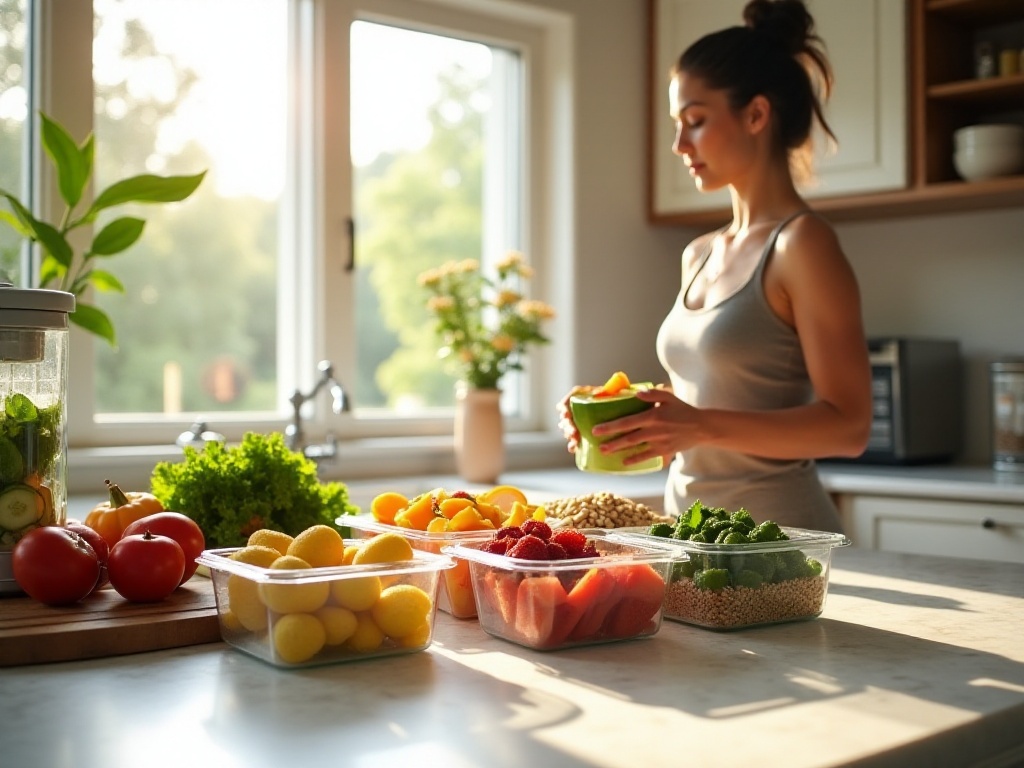
Beverage Pairings
Speaking of drinking water, I have a little trick. I add some fruits or vegetables to water, like lemon slices, mint leaves, or cucumber slices. This not only enhances taste but also adds vitamins. Recently, I particularly like blueberry mint water - both beautiful and healthy.
I also make my own fruit teas. For example, slice fresh lemons and oranges, add some honey and rose petals, pour in warm water, steep for ten minutes, and you have a delicious fruit tea. This is much healthier than store-bought fruit tea, and you can adjust the recipe according to your taste.
I used to really like sugary drinks too, feeling like life was missing something without bubble tea. Later I gradually switched to sparkling water and started making sugar-free drinks. For example, I'll add fresh fruit juice to sparkling water, which quenches thirst without consuming too much sugar.
Speaking of tea, I've also developed a tea-drinking habit now. Green tea, oolong tea, and black tea are all good - the key is finding what suits you. For example, since my stomach isn't very good, I choose milder teas like Dragon Well or Pu'er. I also pay attention to water temperature and steeping time to avoid the tea becoming too bitter.
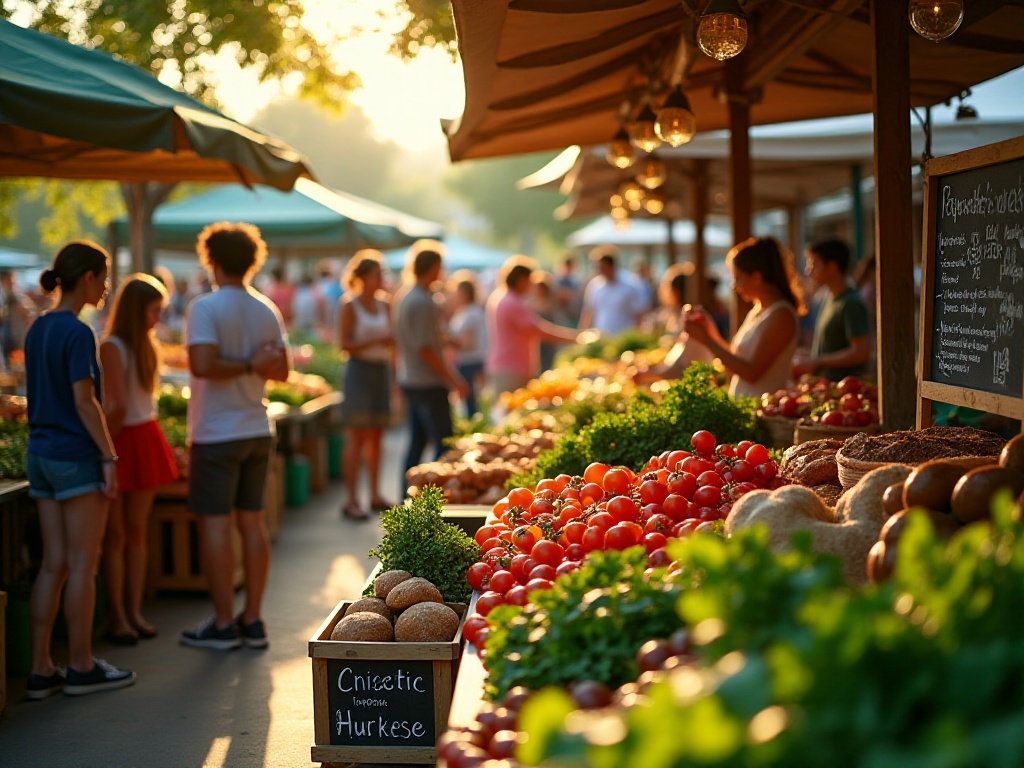
Home Meal Preparation
I can now prepare 80% of my meals at home. Honestly, this process wasn't easy, but once it becomes a habit, you'll find it's actually very simple. For example, when I want fries, I use zucchini or cauliflower instead of potatoes - the baked "fries" are both healthy and delicious.
Ingredient storage and management is also a science. I process vegetables and fruits uniformly on weekends, cutting them and storing them in containers. This makes them readily available when wanted, which is very convenient. However, note that processed ingredients should be consumed within 3-4 days, as nutritional value decreases after this time.
I also prepare some emergency ingredients, like frozen dumplings and vegetables. Although fresh ingredients are best, having these backup foods ensures healthy eating doesn't get interrupted during particularly busy times or unexpected situations.
Also, I've found cooking can actually be very fun. I often try new recipes or modify traditional dishes to make them healthier. For example, I use oats instead of breadcrumbs to coat chicken wings - not only healthier but also tastes great.
Kitchen tool selection is also important. A good non-stick pan can reduce oil usage, and a good blender lets you easily make various smoothies and sauces. Although these tools might require some investment, they're worth it in the long run.
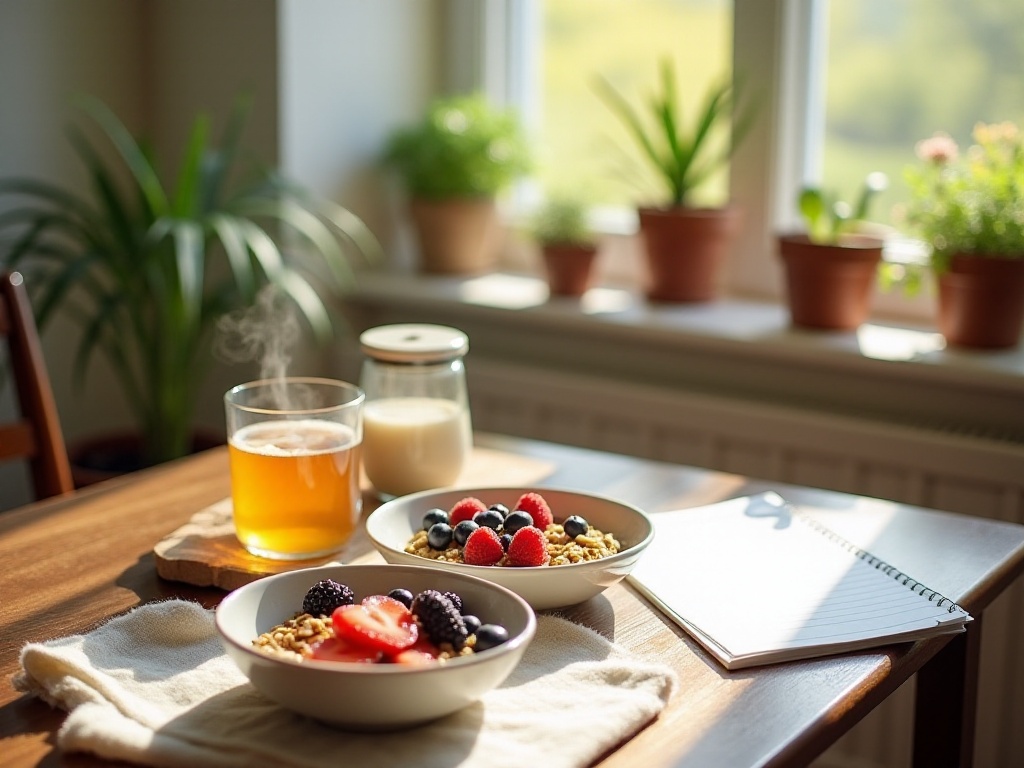
Final Words
Healthy eating really isn't difficult - the key is finding what works for you. Start with the simplest things, like trying to make your own breakfast today, or adding some lemon slices to your water.
Change doesn't need to happen overnight; what's important is starting to act. Just like how I changed from a kitchen novice to someone who can now confidently prepare three meals, though this process had setbacks, each step brought me closer to health.
I look forward to hearing your story and hope you can find your own path to healthy eating. Let's work together to turn our kitchens into healthy food production bases!


